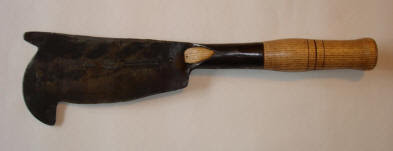I'm quite excited about tomorrow's hazel planting. Establishing a new native species coppice woodland is not commonly done today. People plant broadleaved woodlands for sure, but the criteria is often a generally assumed benefit to nature and while the planting of any tree is commendable, I have sometimes felt that opportunities for sustainable future timber production have been missed. In my first years working in the glen we did quite a lot of planting under the very popular native pinewoods scheme that the Forestry Commission ran.
Meggernie pines
This scheme was aimed at enlarging the overall area of Caledonian Pinewood in Scotland and involved either the natural regeneration of relic fragments of these ancient woods or new planting in suitable areas. This new planting was what provided the employment and in short involved planting pines (grown from Meggernie seed) on the drier sandier knolls and mixed broadleaves elsewhere. We planted Rowan, Birch, Hazel, Ash, Cherry, Willow, Holly, Juniper and Alder amongst other things and I recall having an interesting chat with the forest manager about planting them out in same species groups closer together than the recommended 3 metre spacing with a view to future timber production. The conversation ended with a realisation that we were (in the strange way that you can) planting a Site of Special Scientific Interest (SSSI) and that both this and a lack of any access to the plantations could hinder future timber production.
Future timber production from these plantings simply did not appear to be on the agenda as indeed it still is not in the majority of broadleaf planting perhaps the equation is Conifer = timber, broadleaf = nature, but I beg to disagree and with what we are doing tomorrow hope to put my money where my mouth is by planting with a purpose. That purpose being the provision of timber and small round wood on a continual cycle, a cycle that will link our actions with those of our Celtic ancestors and even their Neolithic forebears.
People since time immemorial have used wood - whatever they had to hand usually to make the things they needed, fire, boats, shelter, weapons, fire, a bit more fire. We know this because we have seen badly drawn pictures of these people using these things in museums and books.
Anglo Saxons using small round wood - note the wattle and daub wall, loom etc. Note also the strange absence of criss-cross sandals so common in these pictures -perhaps in the wash on the day this scene was painted?
Coppice would have been a common, pretty essential practice for these people, after all if it was good enough for the Romans.... One needs only to look at the tools of today's Coppicer to see a link with the past, indeed you would probably have to go quite far to find something as obviously medieval in origin and still in use today as the Billhook with its multiple regional forms.
There is a thriving market in these good quality old tools as interest in coppice is rekindled. I recently bought myself a left bevelled billhook which I have been using in Coppice Experiment 2. I managed to get a properly fearsome (almost cutting the hairs on the back of your hand)edge on it and find it excellent for cleaning poles and cutting to size. It is also a pleasant tool to use, no engine noise or fumes disturb you in the woodland as you work away, in the footsteps of your ancestors.
Whether these people planted trees or just coppiced natural forest is uncertain. What is certain is that tomorrow we are planting with a purpose and you are welcome to join us.






No comments:
Post a Comment